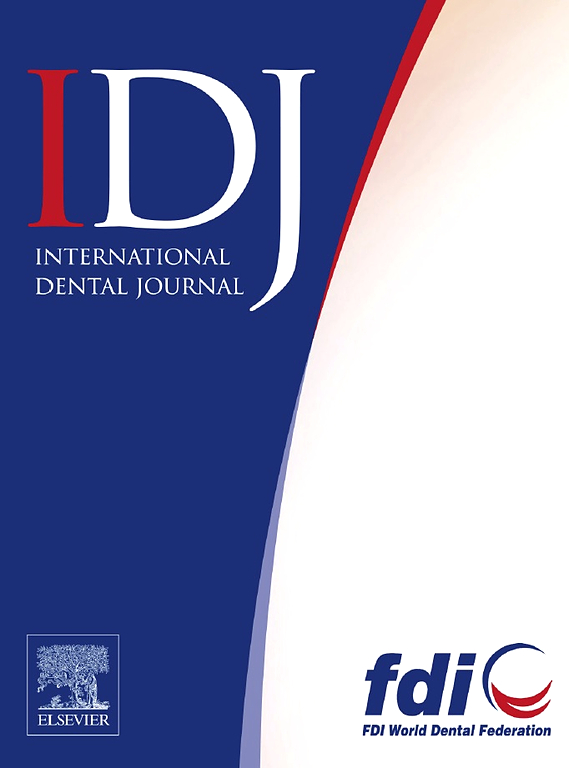Inhibition of Dynamin-Related Protein 1-Dependent Mitochondrial Fission Ameliorates Apical Periodontitis by Attenuating NLRP3 Inflammasome-Mediated M1 Macrophage Polarisation
IF 3.2
3区 医学
Q1 DENTISTRY, ORAL SURGERY & MEDICINE
引用次数: 0
Abstract
Introduction and Aims
The aim of this study was to determine if Dynamin-related protein 1 (Drp1) -dependent mitochondrial fission is involved in the pathological process of apical periodontitis and elucidate the underlying mechanisms.
Methods
Immunohistochemistry, immunofluorescence, and western blotting assessed CD86 expression, NLRP3/Caspase1/IL-1β activation, and mitochondrial dynamics-related proteins in human periapical macrophages. In vitro apical periodontitis (AP) models used macrophages stimulated with P. gingivalis LPS (Pg-LPS), pretreated with/without Drp1 inhibitor Mdivi-1 or NLRP3 inhibitor MCC950. CD86, NLRP3/Caspase1/IL-1β, mitochondrial dynamics proteins, TNF, and IL-6 were quantified via western blot, RT-qPCR, or immunofluorescence. ROS (DCFH-DA), ATP (commercial kit), mitochondrial membrane potential (JC-1), and morphology (TEM, MitoTracker/immunofluorescence) were analysed. Multimodal approaches explored Drp1-mediated mitochondrial fission and NLRP3 inflammasome-dependent M1 polarisation. Mdivi-1-treated AP models were established to dissect Drp1’s role in pathogenesis.
Results
Our findings indicate that the Drp1-mediated excessive mitochondrial fission is present in human periapical lesions. Moreover, there was a positive correlation between the p-Drp1(Ser616) and the elevation of NLRP3, Cleaved-Caspase1, and CD86. In vitro experiments demonstrated that Mdivi-1 effectively inhibited the Pg-LPS induced abnormal mitochondrial fragmentation dependent on p-Drp1(Ser616), rescued mitochondrial dysfunction, and further suppressed the activation of NLRP3/Caspase1/IL1β and the expression of CD86. In vivo experiments showed that Mdivi-1 treatment could significantly alleviate the inflammatory bone erosion at the apex in a murine AP model by inhibiting macrophage polarisation and the NLRP3 inflammatory pathway.
Conclusion
Drp1-mediated excessive mitochondrial fission plays a crucial role in the development of AP by promoting NLRP3 signaling pathway-dependent macrophage M1 polarisation. Targeting Drp1 may serve as a potential therapeutic strategy to prevent AP development, highlighting its clinical translational value.
Clinical Relevance
Mdivi-1 can restore mitochondrial dynamics homeostasis in periapical macrophages, inhibit NLRP3/M1 polarisation, and reduce bone resorption. This suggests that Mdivi-1 might be a promising agent for management of AP in future.
抑制动力蛋白相关蛋白1依赖的线粒体分裂通过减弱NLRP3炎症小体介导的M1巨噬细胞极化来改善根尖牙周炎
简介和目的本研究的目的是确定动力蛋白相关蛋白1 (Drp1)依赖的线粒体分裂是否参与根尖牙周炎的病理过程并阐明其潜在机制。方法免疫组化、免疫荧光和western blotting检测人根尖周围巨噬细胞CD86表达、NLRP3/Caspase1/IL-1β活化和线粒体动力学相关蛋白的变化。体外根尖牙周炎(AP)模型采用牙龈卟啉卟啉脂多糖(Pg-LPS)刺激巨噬细胞,用/不加Drp1抑制剂Mdivi-1或NLRP3抑制剂MCC950预处理。通过western blot、RT-qPCR或免疫荧光定量检测CD86、NLRP3/Caspase1/IL-1β、线粒体动力学蛋白、TNF和IL-6。分析ROS (DCFH-DA)、ATP(商用试剂盒)、线粒体膜电位(JC-1)和形态学(TEM、MitoTracker/免疫荧光)。多模式方法探讨了drp1介导的线粒体分裂和NLRP3炎性小体依赖的M1极化。建立mdivi -1治疗AP模型,探讨Drp1在发病机制中的作用。结果drp1介导的线粒体过度分裂存在于人类根尖周围病变中。此外,p-Drp1(Ser616)与NLRP3、Cleaved-Caspase1和CD86的升高呈正相关。体外实验表明,Mdivi-1能有效抑制Pg-LPS诱导的依赖于p-Drp1(Ser616)的线粒体异常断裂,挽救线粒体功能障碍,并进一步抑制NLRP3/Caspase1/ il -1 β的激活和CD86的表达。体内实验表明,Mdivi-1治疗可以通过抑制巨噬细胞极化和NLRP3炎症通路,显著减轻小鼠AP模型顶点处的炎症性骨侵蚀。结论drp1介导的线粒体过度分裂通过促进NLRP3信号通路依赖的巨噬细胞M1极化在AP的发展中起着至关重要的作用。靶向Drp1可能作为预防AP发展的潜在治疗策略,突出了其临床转化价值。emdivi -1可以恢复尖周巨噬细胞线粒体动力学稳态,抑制NLRP3/M1极化,减少骨吸收。这表明Mdivi-1可能是未来治疗AP的一种有前景的药物。
本文章由计算机程序翻译,如有差异,请以英文原文为准。
求助全文
约1分钟内获得全文
求助全文
来源期刊

International dental journal
医学-牙科与口腔外科
CiteScore
4.80
自引率
6.10%
发文量
159
审稿时长
63 days
期刊介绍:
The International Dental Journal features peer-reviewed, scientific articles relevant to international oral health issues, as well as practical, informative articles aimed at clinicians.
 求助内容:
求助内容: 应助结果提醒方式:
应助结果提醒方式:


